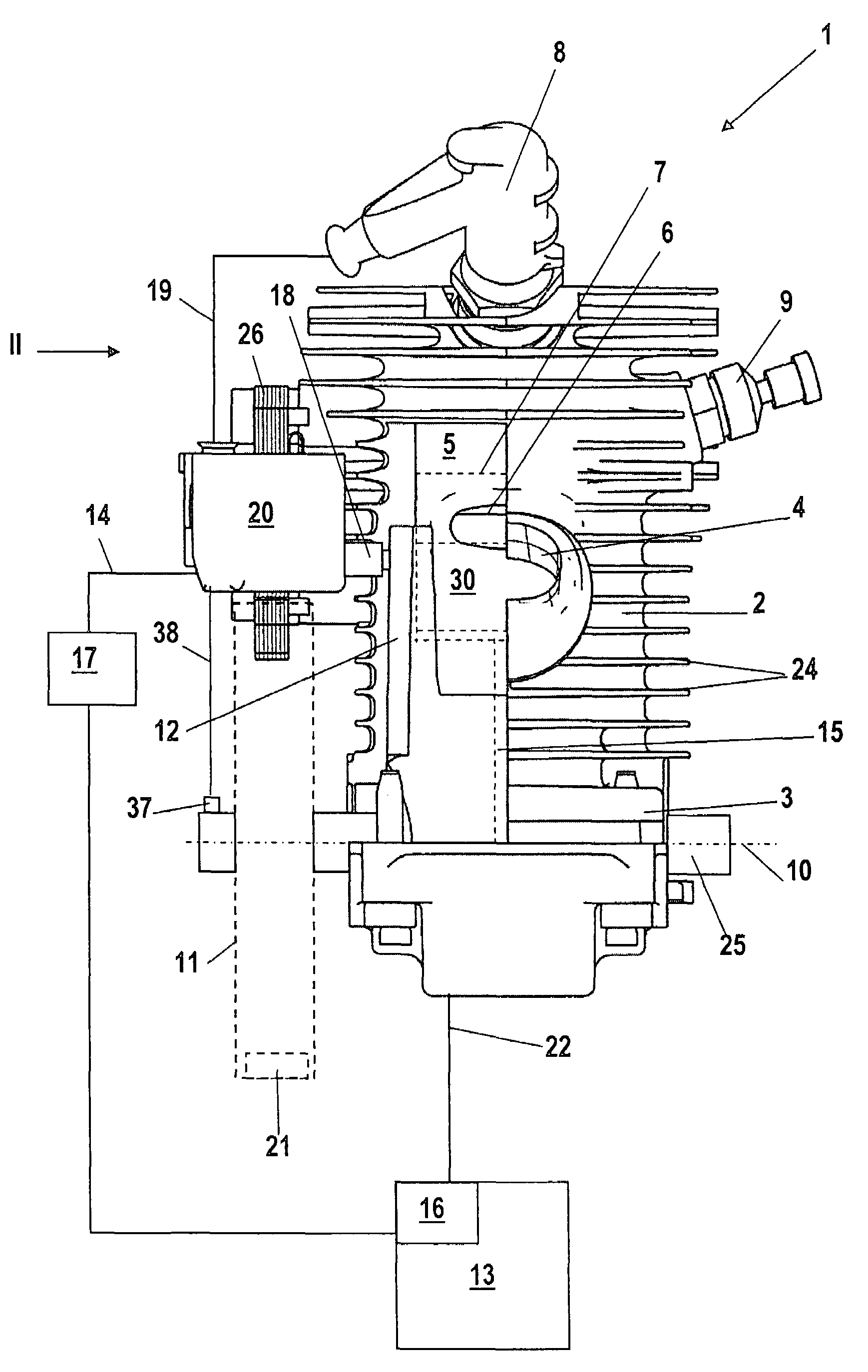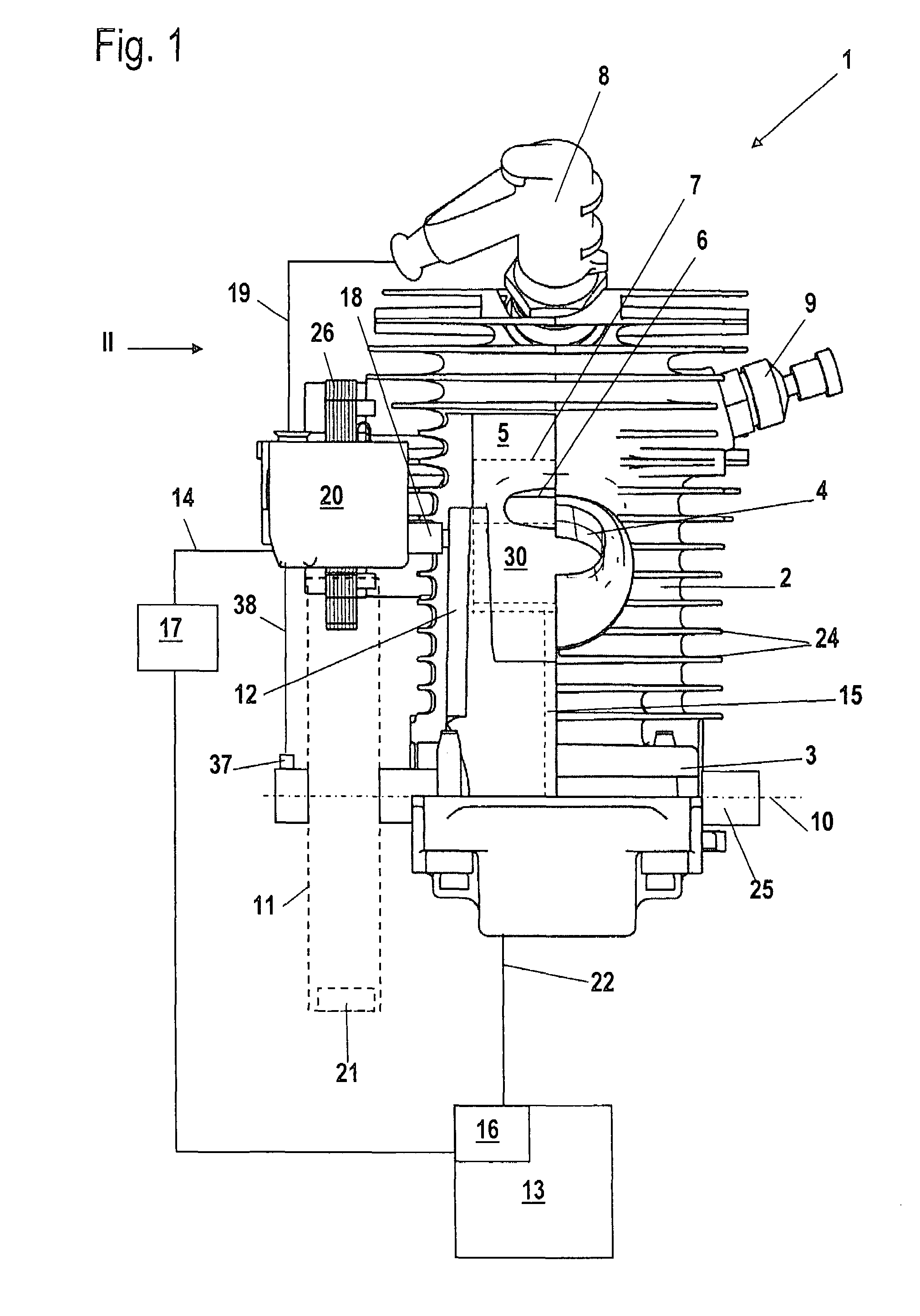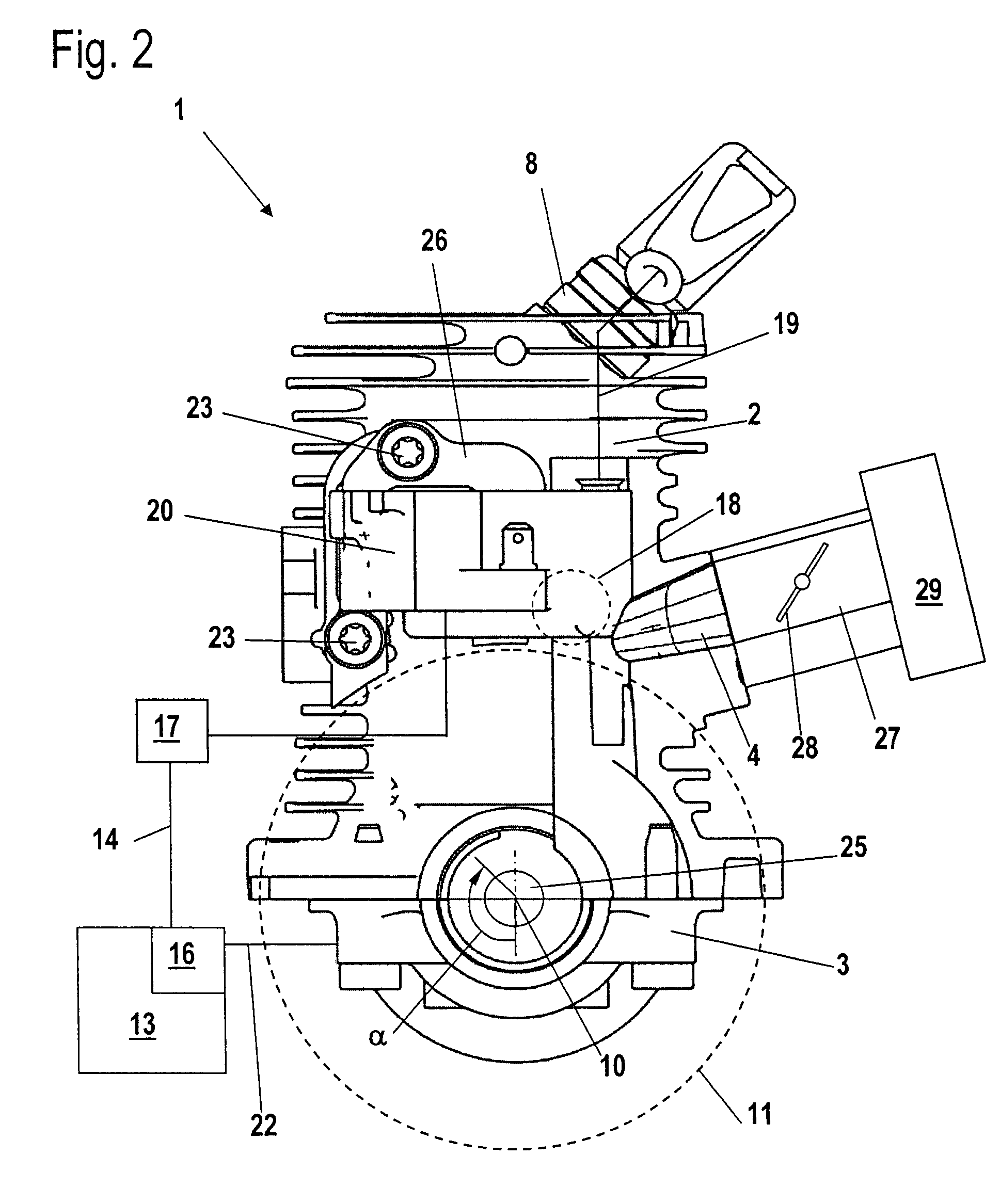Method for operating an internal combustion engine
a technology of internal combustion engine and combustion chamber, which is applied in the direction of machines/engines, electrical control, mechanical equipment, etc., can solve the problems of deterioration of the induction of fresh combustion air or fresh mixture, reducing the efficiency of combustion, and increasing the rpm at the first. , to achieve the effect of increasing the rpm
- Summary
- Abstract
- Description
- Claims
- Application Information
AI Technical Summary
Benefits of technology
Problems solved by technology
Method used
Image
Examples
Embodiment Construction
[0028]The internal combustion engine shown in FIG. 1 is configured as a two-stroke engine. The two-stroke engine 1 has a cylinder 2 having cooling ribs 24 arranged on the outer surface thereof. A piston 7 is reciprocally journalled in the cylinder 2 and is shown in phantom outline. The piston 7 drives a crankshaft 25 via a connecting rod 15. The crankshaft 25 is rotatably journalled in a crankcase 3 about the crankshaft axis 10. An inlet 4 opens on the cylinder 2 via which substantially fuel-free combustion air is supplied to the two-stroke engine which is configured as a single cylinder engine.
[0029]The two-stroke engine 1 includes at least one transfer channel 12 which connects the crankcase 3 to a combustion chamber 5 in the region of bottom dead center of the piston 7. The combustion chamber 5 is delimited by the cylinder 2 and the piston 7. Two or four transfer channels 12 are provided and are arranged symmetrically with respect to a partitioning center plane centered with resp...
PUM
 Login to View More
Login to View More Abstract
Description
Claims
Application Information
 Login to View More
Login to View More - R&D Engineer
- R&D Manager
- IP Professional
- Industry Leading Data Capabilities
- Powerful AI technology
- Patent DNA Extraction
Browse by: Latest US Patents, China's latest patents, Technical Efficacy Thesaurus, Application Domain, Technology Topic, Popular Technical Reports.
© 2024 PatSnap. All rights reserved.Legal|Privacy policy|Modern Slavery Act Transparency Statement|Sitemap|About US| Contact US: help@patsnap.com










